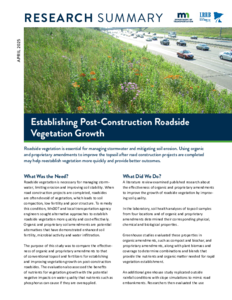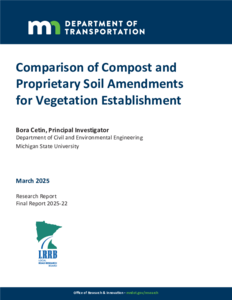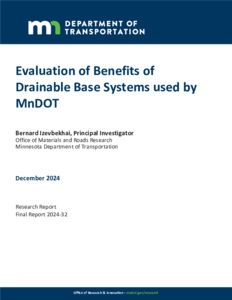Comparison of Compost and Proprietary Soil Amendments for Vegetation Establishment
Creator
Date Created
2025-03
Report Number
2025-22
Description
Evaluation of Benefits of Drainable Base Systems used by MnDOT
Date Created
2024-12
Report Number
2024-32
Description










